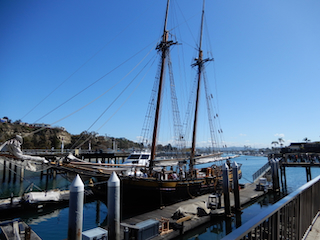
-
| 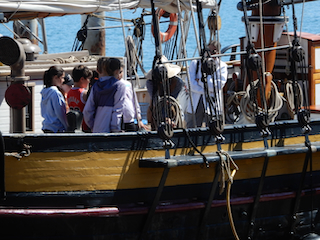
-
| 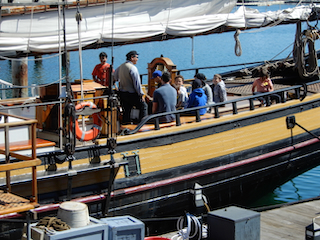
-
|
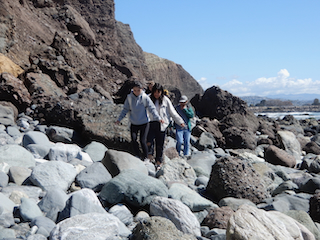
-
| 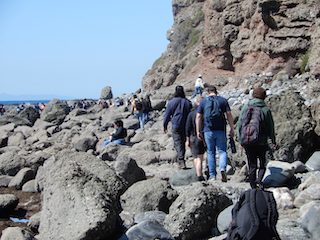
-
| 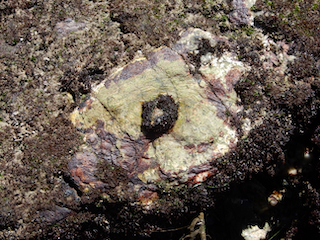
A Lottia gigantea (owl limpet) waiting on its territory for a higher tide.
|

An owl limpet is an effective competitors for space in the mid-intertidal,
provided that the substrate is relatively flat. It is less effective at bulldozing intruders on a territory that has too much topography.
| 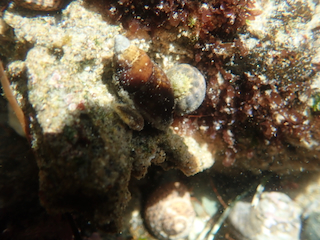
Macron lividus (livid macron) has an unassuming presence compared to other more flashy
southern California neogastropods. I happen to be particularly fond of snail underdogs like this one, with its (livid can mean slate-colored) dull brown color
and lack of fancy frills.
But its classification history has been controversial since it was first proposed as a subgenus of Pseudoliva,
and has since bounced back and forth between families within
entirely different superfamilies, Olivoidea and Buccinoidea. Even now, the family assignment of Macron
within the superfamily Buccinoidea is still regarded as uncertain by the editors of the authoritative Molluscabase (Source 1).
In 1929, Thiele published radula drawings for two species of Macron (including the type species of the genus, and also our local M. lividus).
He demonstrated that their radula was surprisingly similar to more familiar buccinoidean snails
(his drawings are compared along side new SEM images in Fig. 16 of Source 3).
Based on this striking morphological similarity, he reclassified Macron, transferring it from Olivoidea to Buccinoidea.
Most authorities later followed him in reassigning this genus to
Buccinoidea. But this changed in 1997 when famous paleontologist and
snail expert, Dr. Geerat Vermeij, featured our M. lividus and its genus in a publication arguing they were modern representatives of a long
declining snail family (Source 2).
Vermeij acknowledged the radula similarities reported by Thiele, but instead emphasized shell similarities in his justification for moving
Macron back to the family Pseudolividae within
Olivoidea. In his view, M. lividus was among the sparse surviving remnants of a once thriving family of snails,
now well past its more ancient heyday, with its species diversity peaking in the early Cenozoic era over 55 million years ago.
Not everyone agreed with Vermeij. The problem is not simple because the gastropod order, Neogastropoda, has overwhelming diversity
with eight currently accepted superfamilies,
In 2017, Yuri Kantor used the radular evidence to return Macron to Buccinoidea. Then,
Kantor assembled a group of top molluscan experts as co-authors for a landmark study across neogastropods (Kantor et al. 2022; Source 3).
These authors integrated extensive morphological and molecular comparisons that led to far-reaching conclusions.
Their specific results for Macron strongly supported Thiele's
classification, providing robust support for grouping M. lividus from southern Califorinia as a buccinoidean.
Specifically, M. lividus was supported as the sister group of what they called the Buccinanops clade,
and this combined clade was resolved as the sister group of what they called the Busycon clade, and all these together were regarded as
the Core Buccinoidea.
Species of Busycon (called Busycon whelks) are large snails familiar to those visiting eastern U.S. shores, with seemingly
little in the way of resemblance to our livid Macron.
Given its phylogenetic isolation, our Macron lividus is truly a snail of special importance in southern California.
Source 1: Molluscabase (WoRMS) entry for Macron
Source 2: Vermeij, G. 1997. GEOBIOS 30, 7: 997-1002.
Source 3: Kantor, Y. et al. 2022. Zool.J. Linnean Soc. 194: 789-857.
| 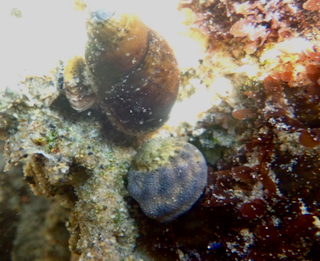
This Macron lividus might be feeding on the juvenile mussel, whereas the nearby
Tegula aureotincta (gilded tegula) would be more
attracted to the algae.
|
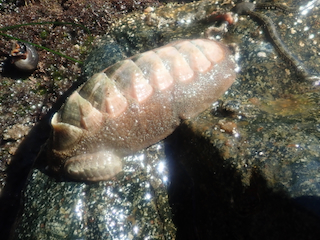
-
| 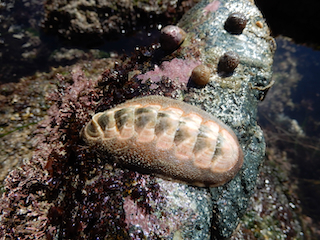
-
| 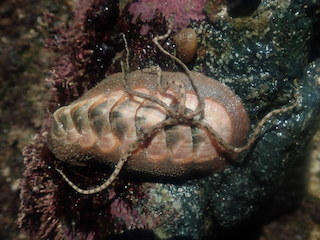
Stenoplax conspicua (conspicuous chiton) and Ophionereis annulata (banded brittle star)
share under-rock habitat, albeit one that would have this unnatural flipped orientation the reverse of normal, typically with the brittle star mouth down
(in the sand) and the chiton mouth up
(clinging to the bottom of a rock, but its mouth poking out to snag drift kelp passing by from underneath the rock).
|
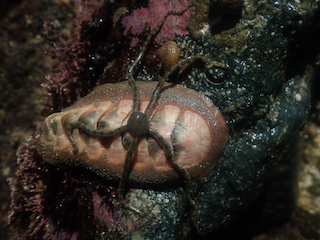
-
| 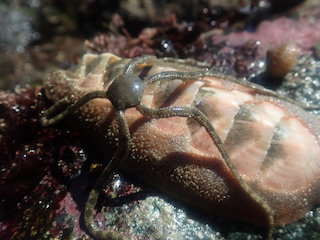
-
| 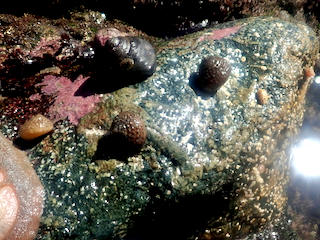
-
|
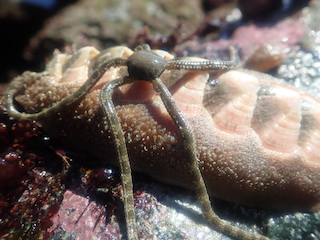
-
| 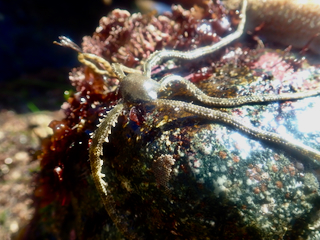
-
| 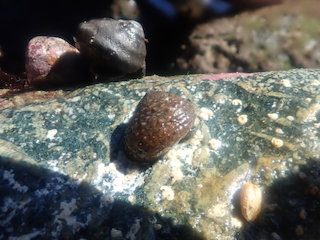
-
|
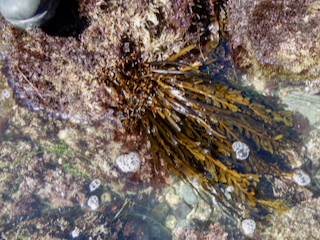
A feather boa kelp still recovering from winter
storms.
| 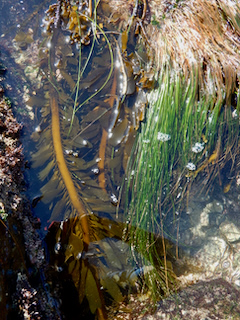
-
| 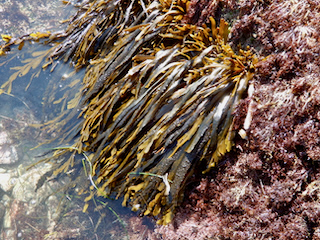
-
|
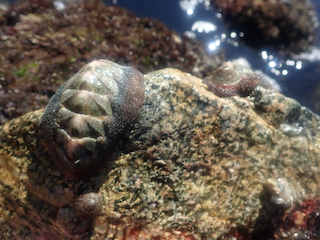
-
| 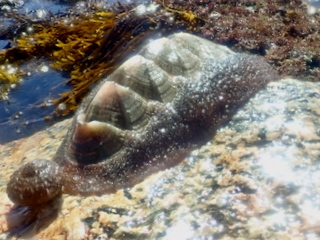
-
| 
-
|
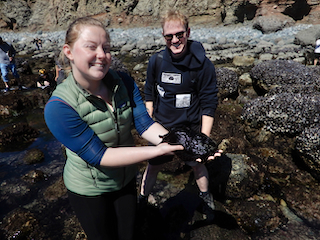
The ever popular black sea hare (Aplysia vaccaria).
| 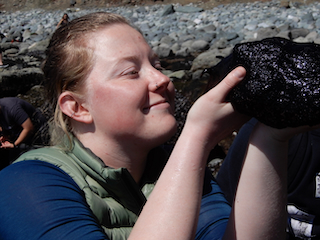
-
| 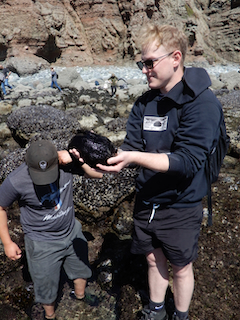
-
|
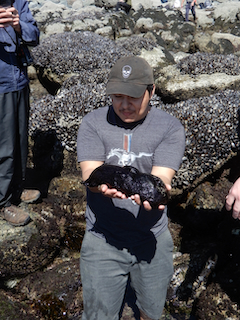
-
| 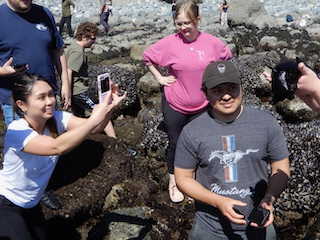
-
| 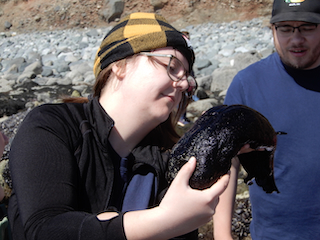
-
|
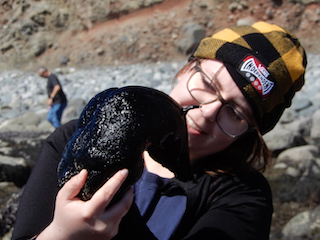
-
| 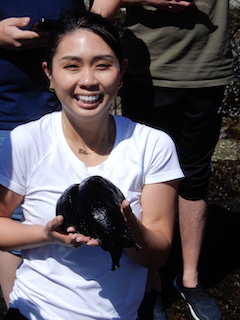
-
| 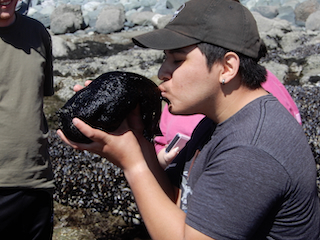
-
|
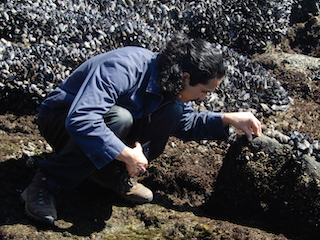
-
| 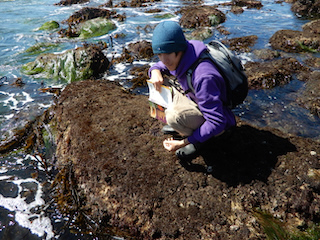
-
| 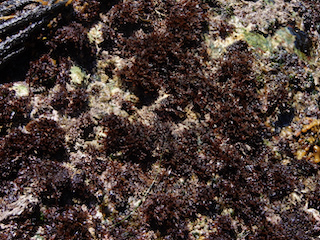
-
|
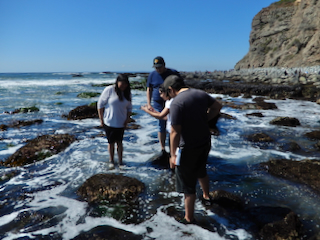
-
| 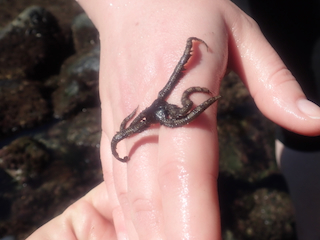
Tentative: Ophiopteris papillosa (flat-spined brittle star)
| 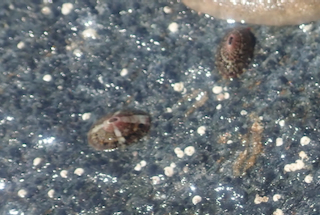
-
|
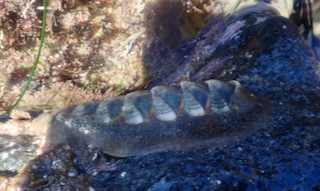
-
| 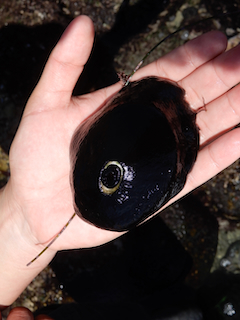
-
| 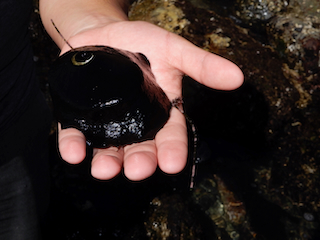
-
|
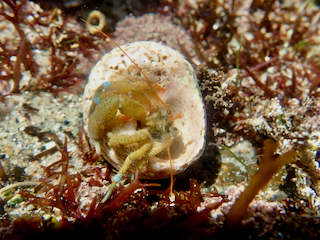
-
| 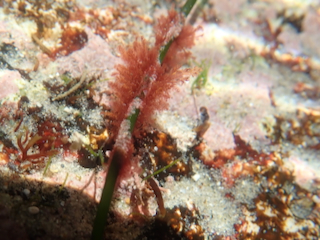
-
| 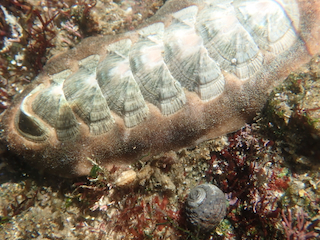
-
|
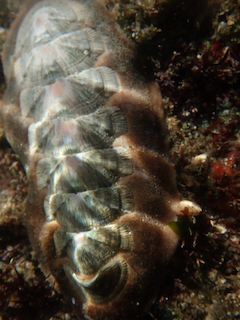
-
| 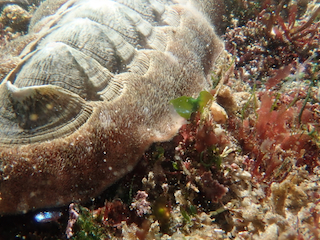
-
| 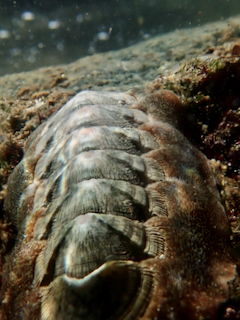
-
|
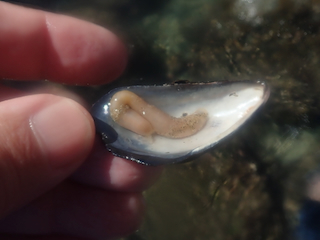
unidentified sea cucumber
| 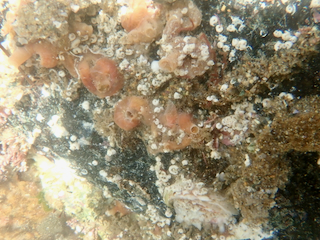
Vermetid gastropods have open tubes attached to the substrate, and suspension feed with strings of mucus.
I have tentatively identified this one as Petaloconchus montereyensis.
| 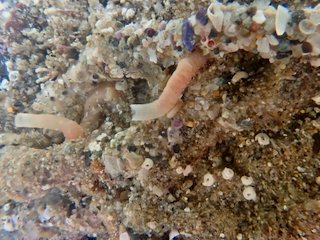
-
|
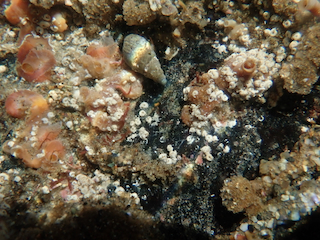
-
| 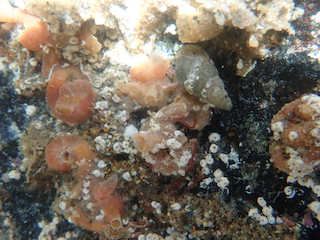
-
| 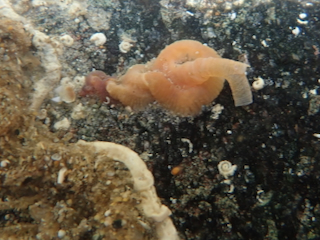
-
|
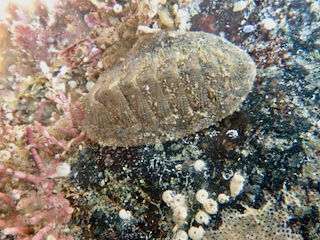
Lepidozona pectinulata (It needs a better common name than pectinulate lepidozona.)
| 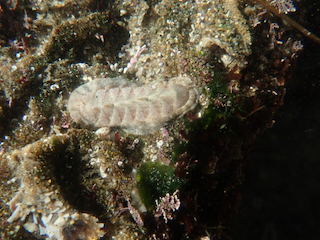
-
| 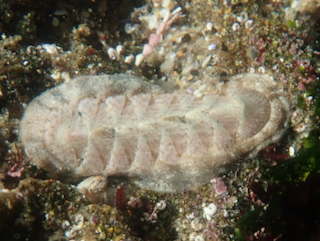
A small adult Stenoplax conspicua (conspicuous chiton)
|
 Under Construction!
Under Construction! Under Construction!
Under Construction!